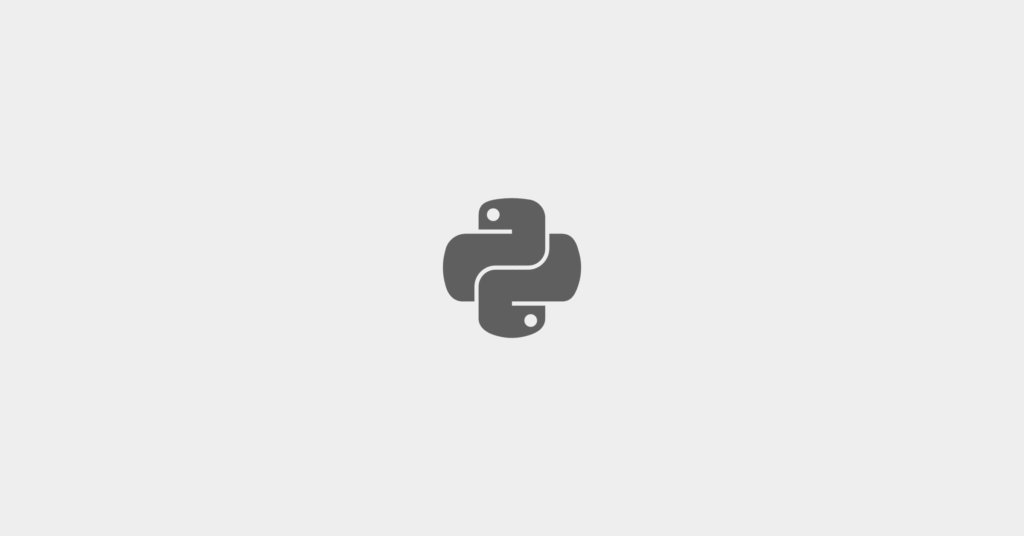Benefits of Learning Python for Finance

Fintech – the use of technology, particularly computer software, in financial services and banking – has seen massive growth over the last few years and increased demand for programming skills. Learning to code is a worthwhile investment if you’re looking to work in the financial industry or are already there and want to upskill for a new role. What about the benefits of learning python for finance?
If you want to learn to code, one of the first decisions you’ll need to make is which language to pick up. While there are hundreds of programming languages that you could learn, you’ll probably want to narrow the list to those that are most commonly used today, and Python should be included on any such list.
Having featured in the top ten lists for years, Python is now the world’s most popular programming language, ranking number one in both PYPL and TIOBE indices for August 2022.
Python is a versatile, open-source (i.e., free to use) programming language with multiple features that make it well-suited to the financial services and banking industry. This article will explore how software development – and Python specifically – are used in finance, before discussing why you might want to choose Python over other languages.
What is Python used for in finance?
How is being able to write computer programs in Python beneficial if you work in the finance industry? As a mature and adaptable language, Python can be applied to a range of use cases:
Big data analysis
Analyzing share prices to identify trends, predict gains, and calculate risk is central to stock trading. The sheer volume of data analysts typically work with means that everyday software such as Microsoft Excel soon reaches its limits in terms of both the number of rows and computational power.
Working with big data requires powerful tools; this is where Python and other data science languages like R can help. Using open-source Python libraries such as SciPy or Pandas, you can easily combine and manipulate large data sets before running your own algorithms to quickly derive insights and identify trading opportunities.
Data visualization
Hand-in-hand with extensive data analysis is the need for data visualization. Presenting data in graphical formats is a powerful tool for identifying patterns and anomalies and is a must for reports and slide decks.
The Python ecosystem benefits from multiple visualization libraries, including Pynance and Matplotlib, which make it easy to present financial data in different formats.
Automated trading
Automated trading involves using algorithms to follow trends, identify profit-making opportunities and execute trades based on custom strategies. By learning Python, you’ll be able to debug and update existing systems, build your own dashboards and rules engines, and even write your own trading bots.
Cryptocurrency
Alongside the stocks, bonds, commodities, and loans that have formed the basis of financial trading for decades, there’s now cryptocurrency to consider. As you might expect for a digital-native marketplace, every aspect of cryptocurrency trading can be handled programmatically. Again, you’ll find Python libraries for all your cryptocurrency requirements, from streaming market data to executing trades based on a custom algorithm.
Banking software
Once an innovation in the financial services industry, the banking software is now run-of-the-mill. Consumers and businesses expect to interact with their money and investments via apps and web pages. But that doesn’t mean there isn’t still scope to innovate in fintech. Thanks to its versatility, Python is a great choice for building the next app that will change how we work in finance.
What are the Benefits of learning Python for Finance?
As a versatile language, Python’s uses range from server-side automation to web applications, data science to game development, and finance. It’s also a great language for anyone new to coding.
Concise and easy to learn
Python was designed to be both concise and human-readable. Its straightforward syntax makes it much easier for novice programmers to make sense of existing code and start writing their programs.
Python has also been designed to handle many of the intricacies of computer programming that often trip up novice developers. Python will catch many common programming errors, such as type confusion or an out-of-bounds array, as you write them – regardless of whether you’re using a text editor or fully fledged IDE to write your code. Being a dynamically typed language, Python works out your variable types for you, so you don’t have to define them upfront.
Furthermore, it’s straightforward to start coding with Python, thanks to the interactive console (also known as the Python shell or Python interpreter). Unlike some programming languages that require you to create a file and compile it before you can see what your code does, the Python interactive console allows you to try out a single line of code and run it without saving the changes first.
When ready, you can write multi-line statements in a file before using functions and exploring object orientation. You can continue using the interactive console to prototype changes before pasting them into an existing file. This low barrier to entry and natural progression makes for a much shallower learning curve than many other programming languages.
High-level language
Being a high-level language means that Python is relatively abstracted from the machine code that a processor executes. Whereas lower-level languages, such as C, require a reasonable understanding of how the program will be run, you don’t need to worry about these details when working in a high-level language.
With Python, considerations such as how data is structured in memory and how memory is allocated are all handled for you. Many high-level constructs, such as dictionaries and lists, are available natively, and libraries are available to meet a wide range of needs. You can write far less code than in another language while achieving the same outcome.
Extensive range of libraries
Having first been released in 1991, Python is now a mature programming language with an active community of developers around the globe. Being open source, both Python and its vast array of supporting libraries are free to use.
Libraries (or modules, as often called in the world of Python) are simply reusable chunks of code that provide a discrete piece of functionality, such as processing data or building graphs. Python libraries can be divided into those that form part of the Python standard library and are therefore available to you from when you first install Python and external libraries that can be imported as needed.
The list of Python libraries is constantly growing as developers share functionality they have built with the rest of the community and others contribute improvements and fixes. If you’re learning Python for finance, you’ll find an array of relevant libraries, from data mining and machine learning algorithms to blockchain and bot development.
Quick to iterate and test
As an interpreted language, Python code does not need to be compiled before it can be run. This means you can run it as soon as you’ve written it and get immediate feedback.
Building up your logic incrementally and seeing how it behaves is an effective way to develop your skills and understanding when you’re new to programming. If you’re experimenting with a new algorithm, being able to tweak and re-run your code without delay speeds up the development process and allows you to explore options freely.
Platform independent
Being platform-independent means that you can run your Python program in different locations without first having to make changes to your code. Whether you’re working on Windows, Linux, macOS, or an embedded system, it doesn’t matter – you can run the same code on a desktop, mobile, server, or even a Raspberry Pi.
Community and continuing development
One of the significant benefits of learning python for finance is that Python isn’t going anywhere anytime soon. It’s popular not just because it’s easy to learn and work with but also because it’s robust, versatile, and extensive. As the language used to build YouTube, Instagram, and several other giants of the technology world, you can rest assured that Python will be in use for years to come.
Python has a massive community of developers using it and contributing to the ecosystem. You’ll find a wide range of online courses for both programming novices and more experienced hands, as well as numerous Stack Overflow channels and other online forums where developers are happy to share their experience and point you in the right direction.
Learn Python for finance
If you’re working in the finance sector, understanding the benefits of learning python for finance and adding those skills to your CV is certainly an investment worth considering. Online courses offer a good starting point, focusing on using Python for finance, such as those offered by Coursera, Codecademy, and Future Learn.
Once you’ve started developing in Python, there is no limit to what you can build. As well as exploring libraries relevant to financial services and banking, you can branch into other areas – from IoT development to machine learning algorithms and more.




